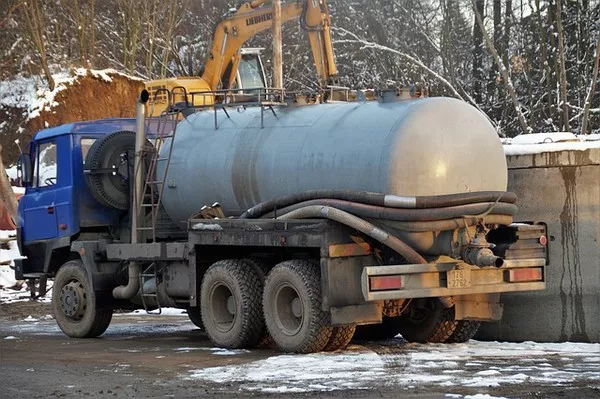Denitrification is a critical process in wastewater treatment, pivotal for reducing the environmental impact of nitrogen compounds. As a part of the nitrogen cycle, denitrification involves the conversion of nitrate (NO₃⁻) to nitrogen gas (N₂), thus removing harmful nitrogen species from wastewater before it is released into natural water bodies. This process is essential for maintaining water quality and preventing issues such as eutrophication, which can lead to significant ecological imbalances. This article delves into the science of denitrification, its importance in wastewater treatment, the mechanisms involved, and the various methods employed to optimize this process.
The Importance of Denitrification in Wastewater Treatment
Nitrogen is a fundamental nutrient for all living organisms. However, excessive nitrogen in water bodies can cause serious environmental problems. High levels of nitrates and nitrites in wastewater can lead to eutrophication, a process where water bodies become overly enriched with nutrients, leading to excessive growth of algae and other aquatic plants. This can result in oxygen depletion, death of aquatic life, and the disruption of aquatic ecosystems.
Denitrification addresses this problem by converting nitrates, a major component of nitrogen pollution, into nitrogen gas, which is harmless and makes up about 78% of the Earth’s atmosphere. By removing nitrates, denitrification helps to protect water quality, ensuring the safety and sustainability of aquatic environments.
The Science of Denitrification in Wastewater Treatment
Denitrification is a microbiological process carried out by a diverse group of bacteria, including genera such as Pseudomonas, Paracoccus, and Bacillus. These bacteria thrive in anoxic (oxygen-depleted) conditions and utilize nitrate as an alternative to oxygen for their respiratory processes. The overall chemical reaction for denitrification can be simplified as follows:
2NO₃⁻+10e⁻+12H+→N₂+6H₂O
This reaction can be broken down into several steps:
- Nitrate Reduction: Nitrate (NO₃⁻) is reduced to nitrite (NO₂⁻).
- Nitrite Reduction: Nitrite (NO₂⁻) is further reduced to nitric oxide (NO).
- Nitric Oxide Reduction: Nitric oxide (NO) is then reduced to nitrous oxide (N₂O).
- Nitrous Oxide Reduction: Finally, nitrous oxide (N₂O) is reduced to nitrogen gas (N₂).
These steps are facilitated by specific enzymes produced by denitrifying bacteria, including nitrate reductase, nitrite reductase, nitric oxide reductase, and nitrous oxide reductase.
Mechanisms of Denitrification in Wastewater Treatment
Denitrification in wastewater treatment typically follows nitrification, which is the aerobic conversion of ammonia (NH₃) to nitrate (NO₃⁻). This two-step process—nitrification followed by denitrification—is essential for the effective removal of nitrogen from wastewater. Here’s how it works:
Nitrification: Ammonia in wastewater is first oxidized to nitrite by ammonia-oxidizing bacteria (AOB) and then to nitrate by nitrite-oxidizing bacteria (NOB) under aerobic conditions.
NO₂⁻ + O₂ → NO₃
Denitrification: The nitrate produced during nitrification is then converted to nitrogen gas by denitrifying bacteria under anoxic conditions, as previously described.
This sequential process requires careful management of oxygen levels within the treatment system, as nitrification is an aerobic process, while denitrification is an anoxic process.
Methods to Optimize Denitrification in Wastewater Treatment
Several strategies can be employed to enhance denitrification in wastewater treatment plants:
Anoxic Zones: Creating designated anoxic zones within the treatment system ensures that denitrifying bacteria have the appropriate environment to thrive. These zones are typically designed with low or no oxygen levels to promote denitrification.
Carbon Source Addition: Denitrifying bacteria require a carbon source for their metabolic activities. Adding external carbon sources, such as methanol, acetate, or biodegradable organic matter, can enhance the efficiency of the denitrification process.
Controlled Aeration: Properly managing the aeration process ensures that nitrification and denitrification occur sequentially and effectively. Intermittent aeration or using separate reactors for nitrification and denitrification can be effective strategies.
Biofilm Reactors: Biofilm-based systems, such as moving bed biofilm reactors (MBBR) and biofilters, provide a large surface area for microbial growth, enhancing the efficiency of both nitrification and denitrification processes.
Integrated Fixed-film Activated Sludge (IFAS): This hybrid approach combines the benefits of activated sludge systems and biofilm reactors, offering improved nitrogen removal efficiency.
Membrane Bioreactors (MBR): MBRs combine biological treatment with membrane filtration, providing high-quality effluent and effective nitrogen removal. They offer better control over process conditions, making them suitable for achieving stringent nitrogen limits.
Challenges and Considerations
While denitrification is a crucial process in wastewater treatment, it presents several challenges:
Carbon Source Availability: Ensuring an adequate supply of carbon is essential for denitrification. Wastewater often lacks sufficient carbon, necessitating the addition of external sources, which can increase operational costs.
Oxygen Control: Maintaining the delicate balance between aerobic and anoxic conditions is critical. Excess oxygen can inhibit denitrification, while insufficient oxygen can hinder nitrification.
Temperature Sensitivity: Denitrifying bacteria are sensitive to temperature variations. Optimal temperatures for denitrification typically range between 10-30°C. Lower temperatures can slow down the process, necessitating longer retention times.
Process Complexity: Integrating and managing different treatment stages (nitrification and denitrification) can be complex, requiring advanced control systems and skilled operators.
See Also What Is The Meaning Of Stp In Water Treatment
Conclusion
Denitrification is a vital process in wastewater treatment, playing a key role in mitigating nitrogen pollution and protecting aquatic ecosystems. By converting harmful nitrates to harmless nitrogen gas, denitrification helps to ensure water quality and ecological balance. While the process involves intricate microbiological and chemical mechanisms, advancements in treatment technologies and strategies continue to enhance its efficiency and reliability.
Effective denitrification requires a comprehensive understanding of the underlying science, careful management of treatment conditions, and the integration of innovative technologies. As the demand for sustainable and environmentally friendly wastewater treatment solutions grows, denitrification will remain a cornerstone of efforts to reduce nitrogen pollution and safeguard water resources for future generations.

